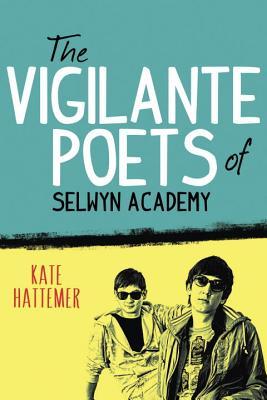
In 2014, the Public Library of Cincinnati and Hamilton County selected local author Kate Hattemer’s debut novel The Vigilante Poets of Selwyn Academy for their On The Same Page program, a yearly opportunity for the community to read the same book. This actually took place back in the fall so I realize I’m a little late, but as the saying goes “better late than never”.
I admit I am a little older than what might be considered the target audience for this novel; however, I think the Library knows (and therefore didn’t have a problem selecting this book) that YA novels aren’t just for YA’s anymore.
From the point of view of someone that hasn’t been a teenager in a while, I love the way Hattemer makes her protagonist, Ethan Andrezejczak, both endearing and annoying. He is an art student at Selwyn Academy in Minneapolis, Minnesota – a school that specializes in art education and hosts a reality television show For Art’s Sake, a show I would call a cross between The Real World and American Idol. His teen angst takes center stage during much of the novel; however, the plot takes the shape of a humorous mystery or thriller – on a teenage level.
The humor is wonderful throughout the book but one chapter is exceptionally brilliant. While Ethan and his friend Luke sit in calculus class, they discuss the events of the last day while making the teacher think they are discussing calculus. The reader knows that when the conversation switches mid-sentence to calculus it’s because the teacher is walking suspiciously in Ethan and Luke’s direction.
Hattemer manages to strike the right balance between not denying that teenagers have hormones but presenting them with hearts and minds, as well. Inspired by the poetry of Ezra Pound, Ethan and his friends set out to right some injustices they discover about the reality show taking place at their school. Along the way, they learn more about their friendships and themselves.
It would probably come as a surprise to most that a gerbil named Baconnaise saves the day. It would probably come as even more of a surprise that, in the story, it pretty much works.





